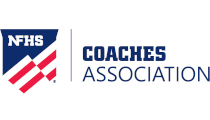How Competition in Practice Can Lead To Big Match Victories
By Michael Carman on April 09, 2015 coaches PrintAs a younger coach, I found my teams on the losing end of many close matches. As a result of this, I kept asking myself how I could get my players to compete harder in matches. When looking at my practices, the players were always busy. They were hitting many balls and working on perfecting the fundamentals. It seemed to me that they were preparing as much as possible. What was I missing? Why wasn’t this translating to match wins? It wasn’t until I got to spend some time with legendary UC Santa Cruz and Middlebury coach Bob Hansen that I realized my error. He showed me that it’s not just about hitting balls, drilling and conditioning. The real secret is to turn everything that you do in practice into a competition.
Students come out for sports for many reasons. Some want to make friendships, represent their schools, experience something new, but many of them come out because they enjoy competition. High school sports are activities which push athletes to their limits and in many cases allow them to test their limits against opponents. This is one of the unique elements about high school athletics as students don't usually compete against others for academic grades. Competition builds internal pressure within athletes and lets them learn their individual and collective limits. Consequently, when coaches set up activities that replicate competition, they find their teams have better results when they get to their actual games or matches.
Reflecting back to Coach Hansen's results in employing this tactic, I now use competition as the basis for everything we do in our practices. In tennis, I could have players stand with a basket and hit countless serves, or I can create a game in which the players try to see who can hit a serve into six different zones in the least amount of tries, or even try to see which player can make the most 1st serves in a row.
Frequently, I watch students who say they are "practicing," but really see them only engaging in the motions of physical activity. Instead of the monotony of practicing ground strokes, I have teams compete as pairs to see which duo can hit the most shots in a row. If I find that is not challenging enough, I can set a number of shots that I want to see. If that doesn't work, I can add a time limit that it has to be completed. Essentially, I can create competition for varying levels of players by modifying the tasks to make them progressively more challenging. It's not that I want to build frustration; it's that I want students to test and push their limits.
One modification may work for the JV group, but I may have the varsity group participate with more stipulations of time or numbers of balls hit before an error. I can even add rewards or deterrents that may include fewer balls to clean up, less practice time or additional pushups – provided that these activities are done to improve players and not to be used as punishments. Once you install competition into every aspect of daily practice, it will naturally translate to better match results.
Playing in practice and playing in matches are two different things. In order to bridge the gap, it is better to mimic the competitive atmosphere that you find in live matches, which will amount to improved team results.
Michael Carman
Michael Carman is a teacher in the Brentwood School District and the boys tennis coach at Heritage High School in Brentwood, California. He has been honored as a past Bay Valley Athletic League Coach of the Year and his team won the 2014 league championships.
Most Recent Articles
- nfhs news NFHS Learning Center Delivers 25 Millionth Course
- Track & Field/Cross Country article Effective Communication with Athletes and Coaches
- nfhs news Player Equipment Changes Highlight 2025 High School Football Rules Revisions
- Player Equipment Changes Highlight 2025 High School Football Rules Revisions
- nfhs news Judgment Call on Second Contact Eliminated in High School Volleyball






